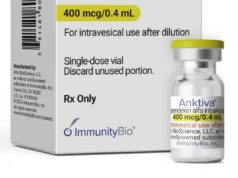
Providing patient-centered care generally means ensuring the patient is the focal point of all clinical and operational decisions. Patient centricity is a strategic goal for most healthcare organizations, but there is no one path to achieving it.
During a panel at the HLTH conference‘s patient engagement track hosted by MedCity News on Sunday, industry leaders discussed the various ways in which organizations can push the needle forward regarding patient-centered care, including building patient trust, engaging navigators and providing digestible health information to patients.
Patient trust can be elusive, especially when considering the ways in which minority groups have been let down by the health industry. But engaging patients in not only their care but also in research is key to ensuring that the patient remains at the center of healthcare.
“Bringing the voice of patients into our decision making is critical to the work that we do,” said Dr. Luther T. Clark, deputy chief patient officer and global director, scientific medical and patient perspective, at Merck, during the panel. “While there are a number of important considerations, what we have found is that…developing collaborations and partnerships with the community [is critically important].”
Partnering with trusted community organizations and individuals is an effective way to engage patients in research and clinical trials, Clark said. This, in turn, helps ensure that products and treatments are tested among a diverse population.
Another hurdle to patient centricity and engagement is the complexity of the healthcare system. For Christina Speck, head of product and employer strategy at BlueCross BlueShield of Rhode Island, there is a clear solution: health navigators.
“Guided decision making [is key]…there are 350,000 apps in the app store today just for healthcare and 19,000 of those have just been added in the last year,” Speck said during the panel. “That’s very confusing.”
Health navigators can step in and help patients make the right decisions for their care needs. They can be a trusted source of information for patients and even highlight special benefits that patients may not be aware of, like second opinion programs.
“Navigation integrated with digital health, integrated with some of the care management programs that we put in place like second opinion, etc., could be very valuable if there is one point of contact in addition to a doctor that is trusted,” Speck said. “In our world, in the payer world, we feel like that is the navigator.”
Along with external support, helping patients become more knowledgeable about their own health helps them to advocate for themselves and their loved ones.
Olaseni A. Bello, Jr., co-founder of medical access app CarpeMed and a Covid-19 survivor, believes that providing simple and digestible information to patients is key for achieving patient centricity.
“I’ll speak from my perspective: I’ve read [health] records and I have to ask ‘What does this mean? What does that mean?’” Bello said at the panel.
Clinicians tend to use jargon and acronyms that are confusing for patients. If patients are provided information that they can easily understand, not only could it help them manage their own health, but it could also help them explain their care to their loved ones, prompting others to receive care.
“When we are talking about family history, having the ability to really share and disseminate information, that’s where you start to [build patient] trust,” Bello said.
As healthcare organizations navigate the new normal brought on by the Covid-19 pandemic, patient centricity will be more important than ever. The strategies above may provide industry stakeholders with a place to start that journey — if they have not already.
Photo: CYCLONEPROJECT, Getty Images








